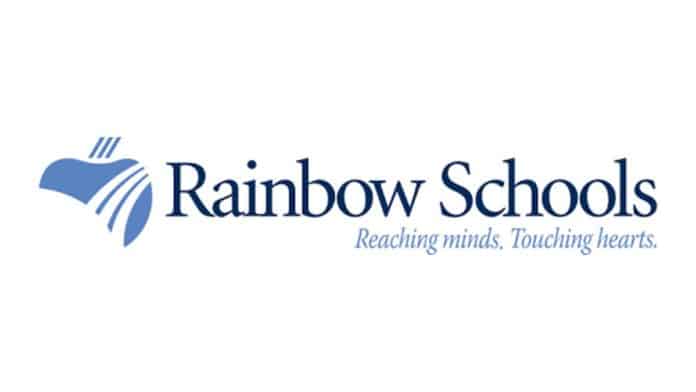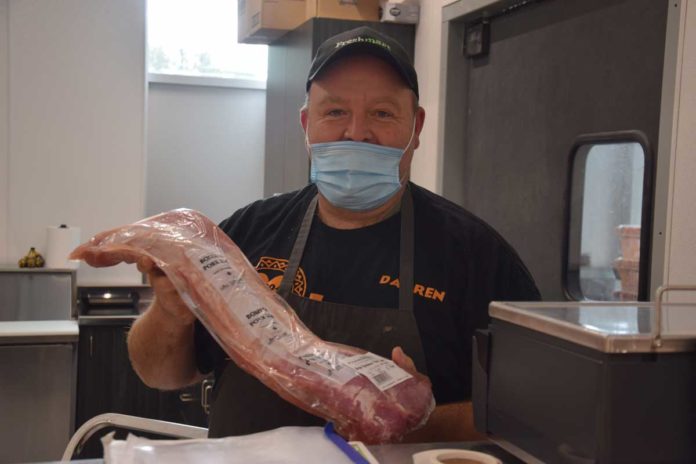GORE BAY—More than three bags of garbage were gathered in a Thursday morning clean-up of Bickell’s Creek in Gore Bay by Manitoulin Streams and members of the Gore Fish and Game Club. The three summer students working with Manitoulin Streams’ Project Coordinator Seija Deschenes are passionate about the environment and the opportunity to raise awareness about water conservation, invasive species and the importance of clean, healthy waterways. The Expositor spoke with Ontario Federation of Anglers and Hunters’ invasive species technician Maylen Moffatt, community resource stewardship liaison Brynn Kiley, and waterkeeper Aiyana Louis to learn about their work, their future and how Island citizen scientists can participate in fun outdoor water projects this summer.
Ms. Louis hails from M’Chigeeng First Nation. She jumped at the opportunity to be Manitoulin Streams’ inaugural waterkeeper and is eager to learn about and share traditional Indigenous water keeping knowledge. She is enrolled at Carleton University in the environmental studies program with a minor in biology. “I like working outside and seeing the benefit when you complete the work,” she said. “Like today, we were cleaning up garbage and you can just see such a difference in the landscape when you complete the job.”
“It’s really important for people to be more aware of Indigenous people’s relationship with water,” she said. “Not only the water but the environment in general.”
All three students have been assisting Judith Jones with the Manitoulin Phragmites project; they’ve also been working in the tree nursery and performing beach clean-ups. Ms. Louis interviewed Carol, a Wiikwemkoong elder, who spoke about how different the landscape was when she was growing up and how it is now. “We also talked about the future and what we can do, not only as Indigenous people but everyone, in order to make sure there is still water for our grandchildren and future generations.”
While Ms. Louis doesn’t have a specific career goal in mind, she does want to be a voice for Indigenous people working in the environment as well as a voice for environmental justice and social justice in general, for all groups of people.
Maylen Moffatt, this year’s OFAH invasive species technician, was an environmental science major at Laurentian University; however, due to program cuts at Laurentian she is transferring to Trent University’s Bachelor of Environmental Science program. She grew up in Manitowaning and still lives on the Island, in Mindemoya. You can learn more about invasive species at one of the many markets Ms. Moffatt attends, including Kagawong, JD’s in Tehkummah and at M’Chigeeng. “A lot of people come to us about that,” she said. “I really like the outdoors and working outside. I’m really fortunate to have a job where I’m working outside and helping to make the environment and local waterways better.”
In her role as community resource stewardship liaison, Brynn Kiley is responsible for community outreach regarding climate change, species at risk and invasive species. She uses her technical and organizational skills to coordinate the various projects. “I mapped all the streams that we’re going to be sampling using ARC-GIS,” she said. Ms. Kiley puts the maps together for sampling points on stream headwaters as well as the middle and the bottom. She coordinates the market awareness events and has been working in the tree nursery every week, getting things in order there. Ms. Kiley is a student at the University of Guelph, working towards her B.Sc. in biology. She wants to be a conservation biologist.
The streams team will be sampling about 14 streams, said Ms. Deschenes. They’re just waiting for the sample bottles to begin. Samples will be sent away for testing to see if anything strikes them as unusual. They will be taking samples along the shoreline in Wiikwemkoong to see if the capped oil wells are leaching and they will be sampling the stream at Kaboni to see if there is a transition due to leaching from the nearby dump. The sampling will also provide baseline information for future comparison. “If we go back to those areas down the road, we can see if they’ve degraded or improved.”
There are many unique and diverse habitats, especially local wetlands and marshlands, that house things that can’t live anywhere else, Ms. Deschenes said. “Wetlands definitely need to be protected. I feel like so many are just being infilled nowadays. You see it moving north as we speak. Wetlands are the filter. They’re what filters the water and any nutrients before it goes down to the mouth. With climate change and things drying up, wetlands are more important than.”
There used to be many different surveys or data gathering in the past but things have changed over time, she noted. That’s why Manitoulin Streams (and other organizations) are encouraging citizen scientists to help with additional observations and to participate in different hands-on activities that families can do together. “Organizations generally aren’t going out and doing research or looking at things the way they used to so they’re relying a lot on the public. Everybody is out and about in different areas so they can be the eyes on the ground.”
Manitoulin Streams has compiled a series of challenges for families across the Island to get involved with during the month of August. The challenges focus on the importance of water with activities that improve water quality and gather information from across the Island. Completing a simple survey or submitting a photo is an opportunity to win Manitoulin Streams swag (visit manitoulinstreams.com for details). The organization hopes the activities inspire Island youth to become stewards of the land and water.
The first challenge was about water conservation, Ms. Deschenes said. They wanted an idea of what people are doing across the Island in regards to water conservation “We’re going to do one that looks at the wildlife along the shoreline. Somebody might see frogs at their house or a beach. That’s a data point because they might see a different species than someone else might find. It could be all different types of animals, amphibians, insects, invertebrates, birds, fish. Families can just be the eyes on the ground. Everybody usually has their phones now so we figured that would be something easy.”
They’re also going to do another garbage clean-up and look at how many pieces of plastic can you find? “It could be those small microplastics that are out and about,” she said. “Take a picture and send it to us.” It’s about raising awareness and getting people to think about what happens to their waste. Another challenge will involve observations of invasive species. The organization will post something new each week.
“It might give people something to do with the kids if they’re looking for something different,” said Ms. Deschenes. “It might be a part of their environmental awareness and being proactive. It could be in a small capacity but with everybody working together, it could build into something bigger.”





